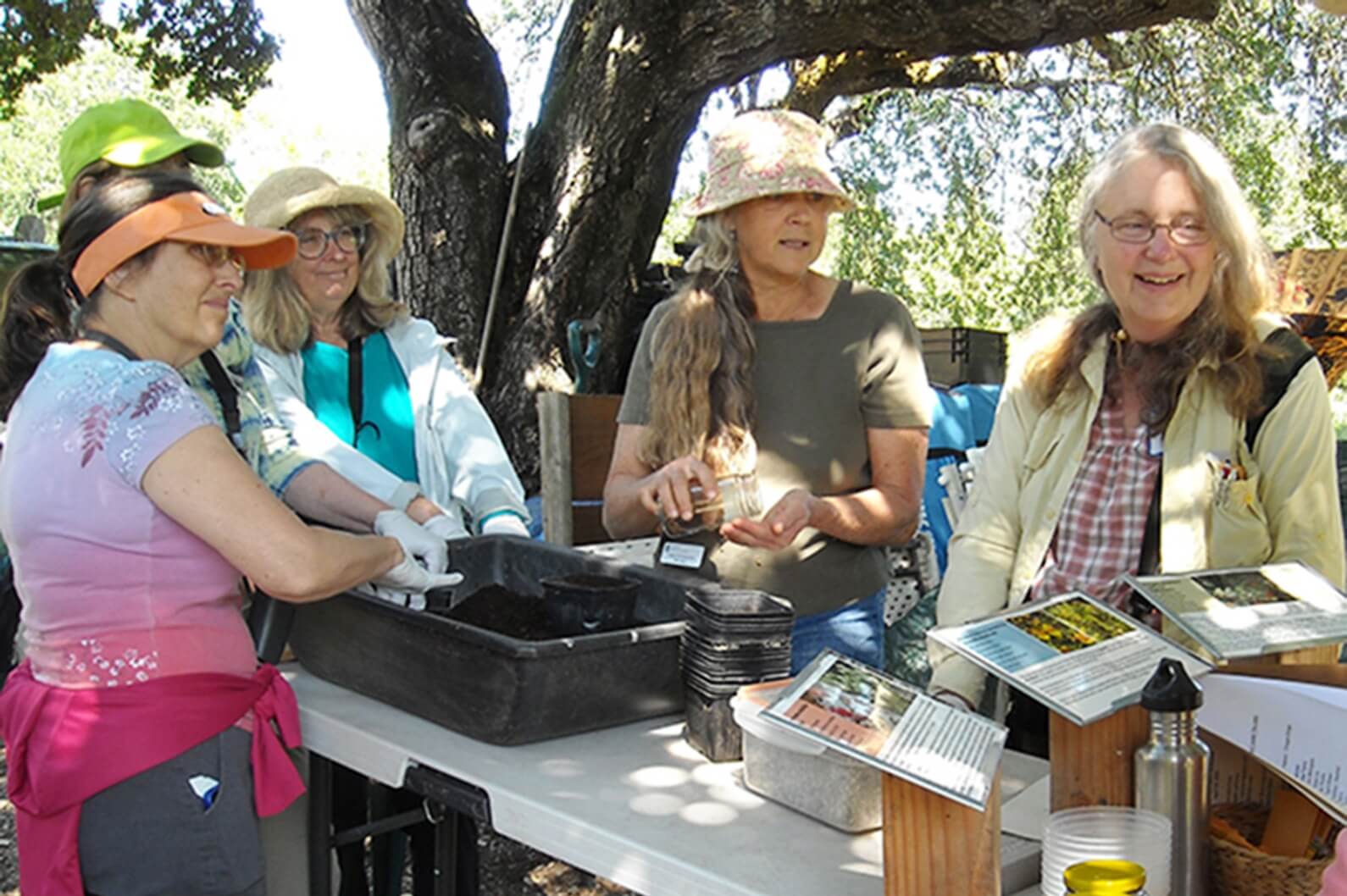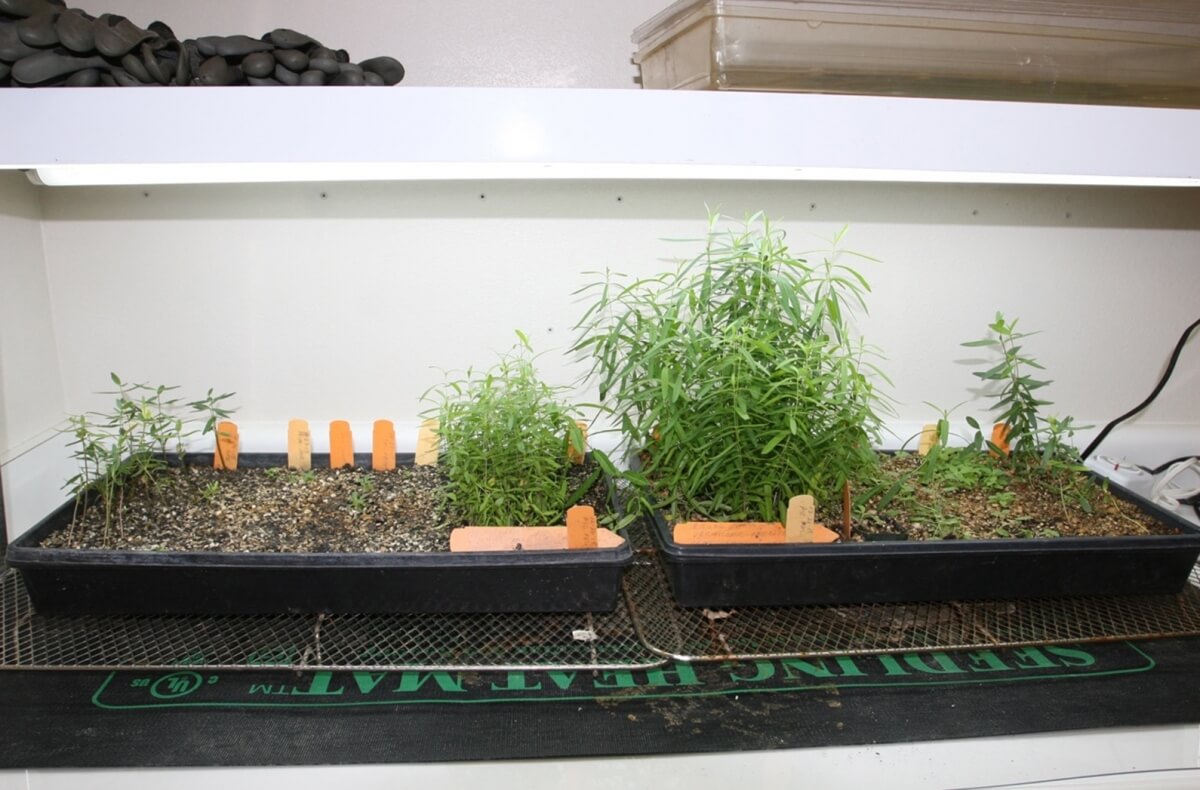Starting Plants from Seed

When propagating, it really pays to think like nature. Pay careful attention to the conditions that the parent plant was growing in—the sun or shade exposure, the soil and duff or litter layer, the moisture in the area, and if possible, the phenology of the plant throughout the seasons. Then think about what happens to those seeds in the wild. Think about the natural conditioning processes that occur to plants and their seed in the native environment.
Many seeds have built-in mechanisms that prevent germination until ideal conditions are met. Even when perfect conditions are met, some of the seed bank of a species will not germinate. They will wait, often camouflaged in the duff, as an insurance policy against a possibly disastrous growing season.
Would it make any sense for the seed to germinate right away, or will conditions be better for growth in another season? Seeds do not necessarily hit the ground at the best time for them to germinate. Some seeds germinate more readily when really fresh, while others need to be “dry-conditioned,” (which is what we’re doing while cleaning and storing). What changing conditions are the seeds subjected to while they wait for optimum conditions for germination? Are the seeds encased in fruits that are food for some creature? These types of seed need a prior experience—an intermediate step—in order to germinate.
Seeds are of two basic and very different types: Most are orthodox which means that they need to dry out completely before they will germinate, or they are recalcitrant, which means that they quickly deteriorate when they are too dry. It’s a pretty amazing thing because a living plant is about 95% water, but the orthodox seed when fully dried is only 5% water. The recalcitrant seeds are mostly the nuts such as acorns, buckeyes and bay nuts; they are viable as a seed to sprout for just a short period of time—until they dry out naturally. If they are stored, it is often in an altered form (maybe ground into a meal) for the food value.
My grow-light setup with a heat mat.
If you have room indoors to set up an indoor system, with a grow-light and a propagation or heat mat, you can get plants started that usually germinate in warm weather, and you can get a head start on the season for edible plants, ornamentals, and some native perennials. The propagation mat will bring the soil temperature up to about 70 degrees, which will speed up seed germination rates and root growth.
Do not, however, place the seedling flats or pots directly on the heat mat; raise them above it about one inch using a baker’s rack or 1” x 1” stakes. Otherwise you will be “cooking” the root system!
Not all seeds need light to germinate, but all seedlings need light from directly above to grow well. A grow-light set-up that allows you to adjust the distance above your containers is best. To germinate seeds, put the lights about two inches above the container. When the seeds have germinated, lift the lights to make sure that tender young leaves are not being burned. Put your grow-lights on a timer; most seedlings need 12 to 14 hours of light daily.
Depending on the species I am working with I may use a light barrier, such as a piece of newspaper or burlap or a plastic lid, to really increase the heat and moisture. Situations like this can encourage mold and mildew to grow; a neat little trick is to sprinkle ground cinnamon on the soil. Cinnamon is a natural anti-fungal, and it also smells great!
When germination starts you will want to monitor the growth closely. Remove a light barrier just as the seeds start to germinate and before they put on growth that could be crushed, and if you have a plastic cover over your seedling flat, you’ll need to make sure it does not get too hot for the delicate new seedlings. Sometimes I remove the cover during the “daylight” (when the grow-lights are on) and replace it in the “night” time (when lights are off).
When watering new seedlings I always use water that is at the ambient temperature, and if it’s tap water I fill bottles ahead of time so that any chemicals in the water can off-gas prior to using the water on my seedlings.
The seeds of many native perennial plants can be sowed in flats in the late summer or early fall, watered in once, and then left in a protected place outdoors to experience the changing day lengths and temperature fluctuations. If the rainy season is normal you just have to keep a watch for germination; if not, you will need to water periodically. Some native perennials take months to germinate, so be patient!



